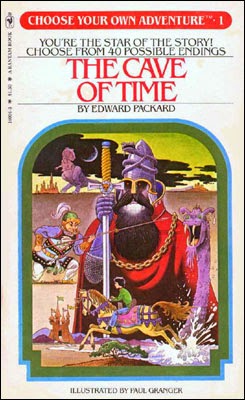This is another series of “oldies-but-goodies” from my own
childhood! The Choose Your Own Adventure
books feature awesome stories, and they’re written in a way that places the
reader in the middle of the action like no other book could. There were dozens of books in the original
series, and I guarantee that any child of the 1980s has read at least one of
them. After a huge demand from readers,
the series was continued into the 1990s and re-launched again in 2005.
With that many adventures to choose from and multiple endings for each one, the number of different stories you can read is literally endless!
Here’s how these books work:
as you start reading, you’re introduced as the main character and given a
brief introduction to the setting and the plot.
After maybe 1 or 2 pages, you’ll be asked to make a decision about what
you’d like to do next. You’re then given 2 or
3 actions to choose from, each with a corresponding page number. Once you’ve made your choice, you flip ahead
and read about where your decisions have taken you! It’s a completely different format from reading
straight through a book, and what’s really cool is that as you move forward, your choices
can lead to some drastically different conclusions. Fair warning, though: not all of the endings are happy ones!
The Choose Your Own Adventure books feature amazing
illustrations and the “chapters” are amazingly short, sometimes less than a
single page. This makes them the perfect
choice for reluctant readers or any kids who’d be more likely to pick up a
video game controller before they pick up a book. If you’re like me, you’ll find yourself
reading the same book over and over, trying to discover all the possible
endings. One thing’s for sure,
though: once you pick up your first
Choose Your Own Adventure book, you won’t be putting it down anytime soon!


